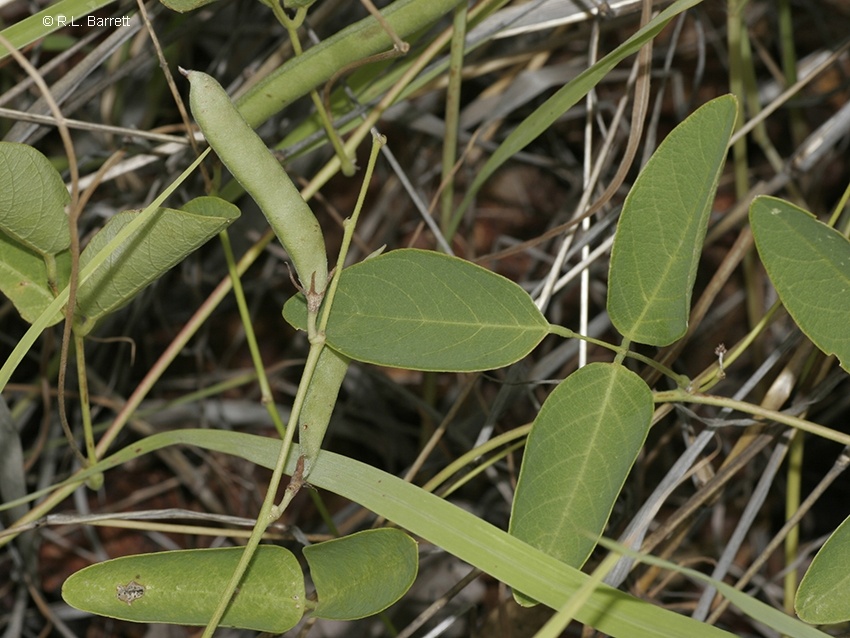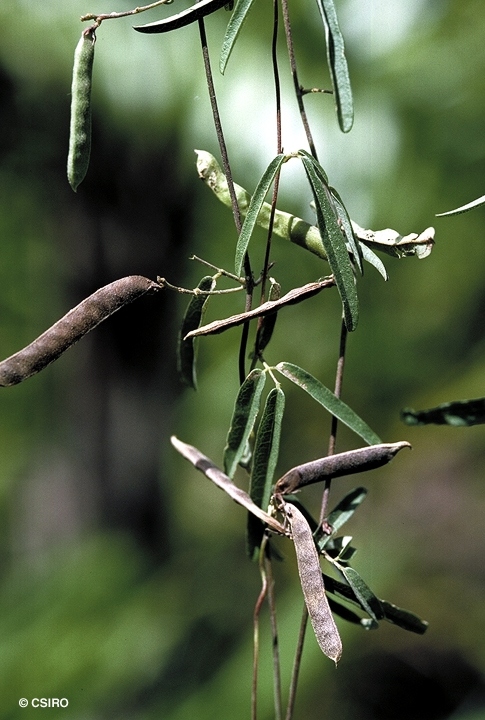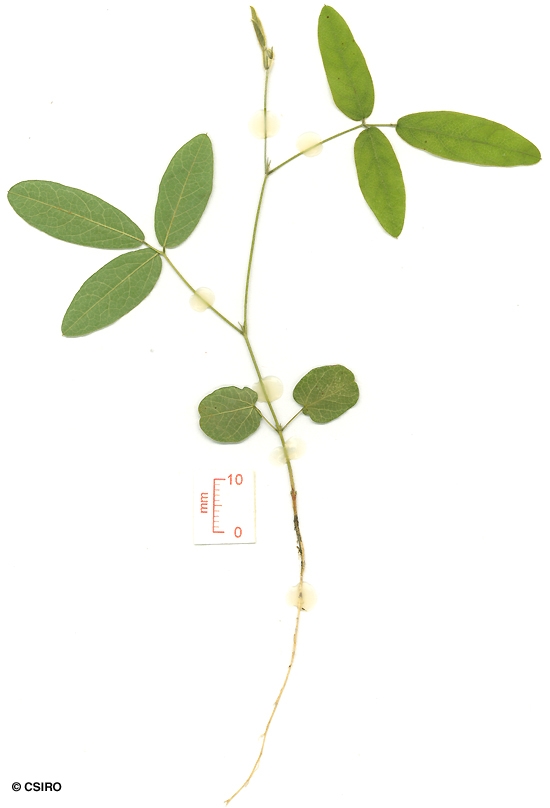Australian Tropical Rainforest Plants - Online edition
Galactia tenuiflora (Klein ex Willd.) Wight & Arn.








Wight, R. & Arnott, G.A.W. (1834) Prodromus Florae Peninsulae Indiae Orientalis 1: 206.
A slender vine not exceeding a stem diameter of 2 cm.
Leaflet blades about 4.5-6 x 0.5-2 cm, stalk about 0.4-1.5 cm long. Lateral leaflet blades about 3-5.2 x 0.5-2 cm, stalks about 0.1-0.3 cm long. Upper and lower leaflet blade surfaces clothed hairs particularly the lower surface. Stipules narrowly triangular to linear, hairy, about 2 mm long. Stipels linear, about 1-2 mm long.
Inflorescence few-flowered, up to 8-20 cm long. Flowers arranged in groups of 2 or 3 along the inflorescence. Calyx lobes 5-9 mm long, calyx subtended by 2 triangular bracts each about 2 mm long. Standard pink, about 13-15 x 10 mm. Wings pink, about 12-13 x 5 mm. Keel about 12-13 mm long. Stamens 10, the filaments of 9 stamens fused to form a tube open on one side with 1 stamen completely free. Anthers about 1 mm long. Ovary and the lower part of the style densely clothed in hairs. Ovary + style about 18 mm long.
First leaves +/- orbicular, apex emarginate, base cordate. Leaves three-veined at the base, midrib depressed on the upper surface. Pulvinus present, petiole densely clothed in hairs. Third leaf trifoliolate. At the tenth leaf stage: leaflet blades elliptic to oblong-lanceolate, apex mucronate, base cordate to obtuse. Both the upper and lower surfaces clothed in appressed, pale hairs. Lateral veins about 9 or 10 on each side of the midrib. Stipules lanceolate, about 1-3 mm long. Stipels present. Plant twining and multistemmed. Seed germination time 29 to 132 days.
Occurs in WA, NT, CYP, NEQ, CEQ and southwards as far as south-eastern Queensland. Altitudinal range in northern Australia from near sea level to 800 m. usually grows in grass and other low vegetation in open forest but also found in and on the margin of monsoon forest. Also occurs in tropical Africa, Asia and Malesia.
An extremely variable species. One of the more common herbaceous legumes of eastern eucalypt woodlands. Grazing characteristics not recorded, but probably contributes to animal production. Hacker (1990).





